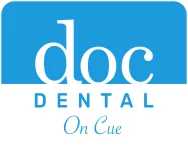Dental Sealants – Kew, Melbourne, VIC
Sealants are highly effective in preventing tooth decay on the biting surfaces of chewing teeth. These surfaces have natural pits and grooves, which can become filled with food particles and bacteria that can be difficult to remove with a toothbrush.
 Though all teeth are covered in enamel, the natural protective coating, the bacteria that gets stuck in deep pits and grooves can eat away at it and the tooth virtually unimpeded. This leads to cavities that might require costly and potentially painful restorative work.
Though all teeth are covered in enamel, the natural protective coating, the bacteria that gets stuck in deep pits and grooves can eat away at it and the tooth virtually unimpeded. This leads to cavities that might require costly and potentially painful restorative work.
Anyone can get a sealant, but they are most commonly recommended for children as their adult teeth start to replace their primary teeth. Having that extra protection from the beginning can keep children cavity-free through their school years. This means families can save money by preventing costly restorative work, and the children can focus on school without getting distracted by toothaches and dental appointments.
What Is A Dental Sealant?
A sealant is a simple procedure in which we place a clear or tooth-coloured acrylic “coating” onto the surface of the tooth. This effectively “seals” the deep grooves where decay is most likely to begin. At less than half the cost of conventional fillings and without any anaesthetics or drilling, sealants are one of the most important preventive tools we offer.
Sealants can last for several years, and studies have shown that the chance of getting a cavity on a sealed tooth is cut in half in the first five years after the procedure. But sometimes sealants do wear out, get chipped, or fall out, so we make sure to check it at every clean appointment. If a sealant does get damaged or fall out, we might recommend a new sealant, but we’d be happy to talk to you about the most appropriate course of action.
Procedure Overview
Placing a sealant is a painless and relatively quick process. Applied most often to molars, dentists first thoroughly clean the tooth’s biting surface, making sure to get into the grooves. Then, they might roughen up the surface of the tooth to better hold the sealant material. After a quick rinse, when the tooth is completely dry, your dentist will place the sealant. Finally, all that’s left is to dry it—and it’s done!
In some cases of extreme risk, we may recommend applying a sealant to a child’s primary tooth. Though they are temporary, primary teeth help guide adult teeth into their proper places. Extreme tooth decay that results in premature loss or extraction of teeth in children can cause misalignment as their other teeth may move to fill those gaps. This can confuse adult teeth as they try to grow into place because there might not be a clear path for them to grow into. Sealants on those at-risk primary teeth aim to support long-term dental health, starting with a smooth transition to healthy adult teeth.
Combined with regular cleans, diligent at-home hygiene routines and consistent fluoride usage, sealants are an important tool in keeping teeth healthy and cavity-free.
